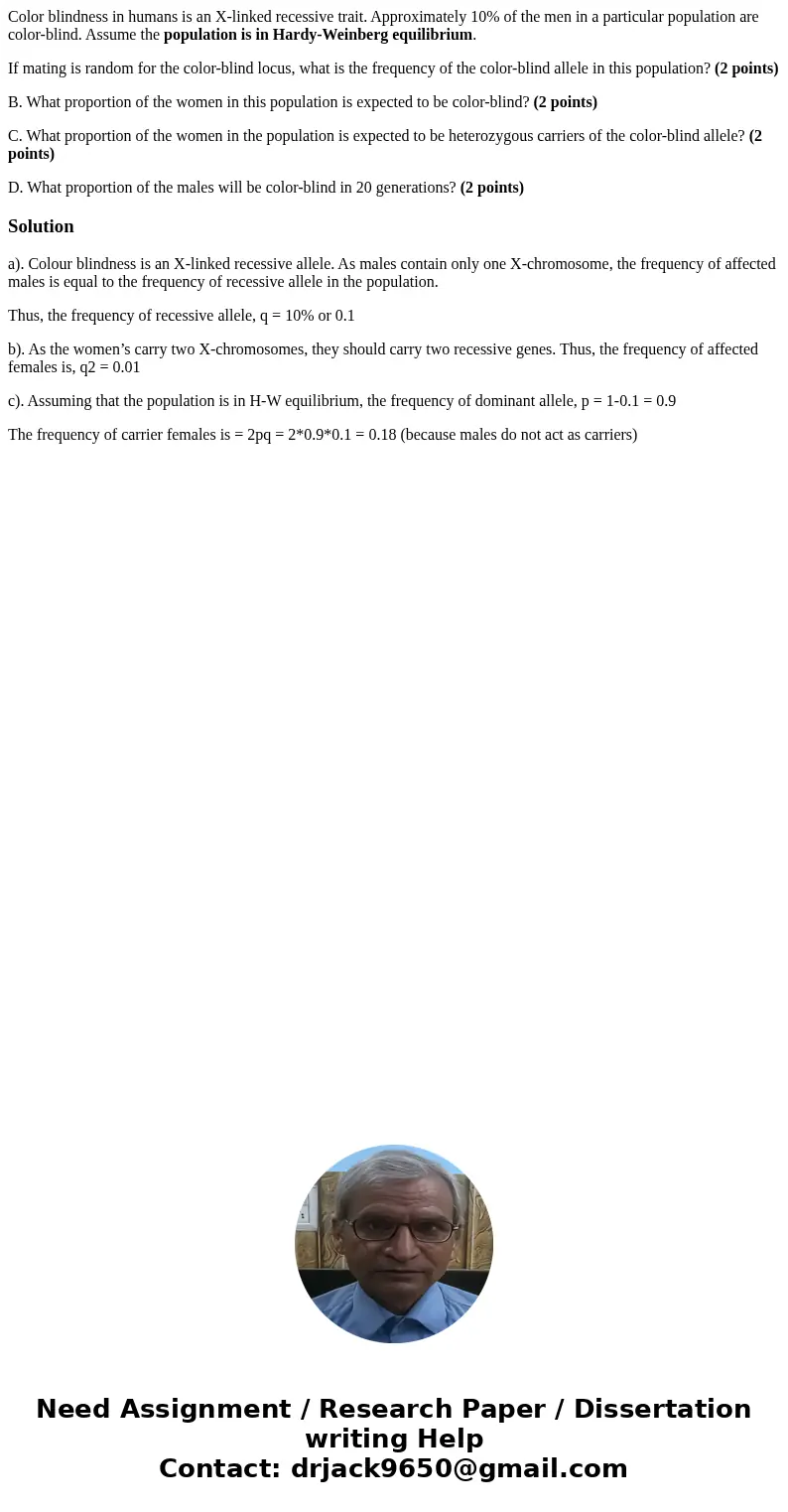Color blindness in humans is an Xlinked recessive trait Appr
Color blindness in humans is an X-linked recessive trait. Approximately 10% of the men in a particular population are color-blind. Assume the population is in Hardy-Weinberg equilibrium.
If mating is random for the color-blind locus, what is the frequency of the color-blind allele in this population? (2 points)
B. What proportion of the women in this population is expected to be color-blind? (2 points)
C. What proportion of the women in the population is expected to be heterozygous carriers of the color-blind allele? (2 points)
D. What proportion of the males will be color-blind in 20 generations? (2 points)
Solution
a). Colour blindness is an X-linked recessive allele. As males contain only one X-chromosome, the frequency of affected males is equal to the frequency of recessive allele in the population.
Thus, the frequency of recessive allele, q = 10% or 0.1
b). As the women’s carry two X-chromosomes, they should carry two recessive genes. Thus, the frequency of affected females is, q2 = 0.01
c). Assuming that the population is in H-W equilibrium, the frequency of dominant allele, p = 1-0.1 = 0.9
The frequency of carrier females is = 2pq = 2*0.9*0.1 = 0.18 (because males do not act as carriers)

 Homework Sourse
Homework Sourse